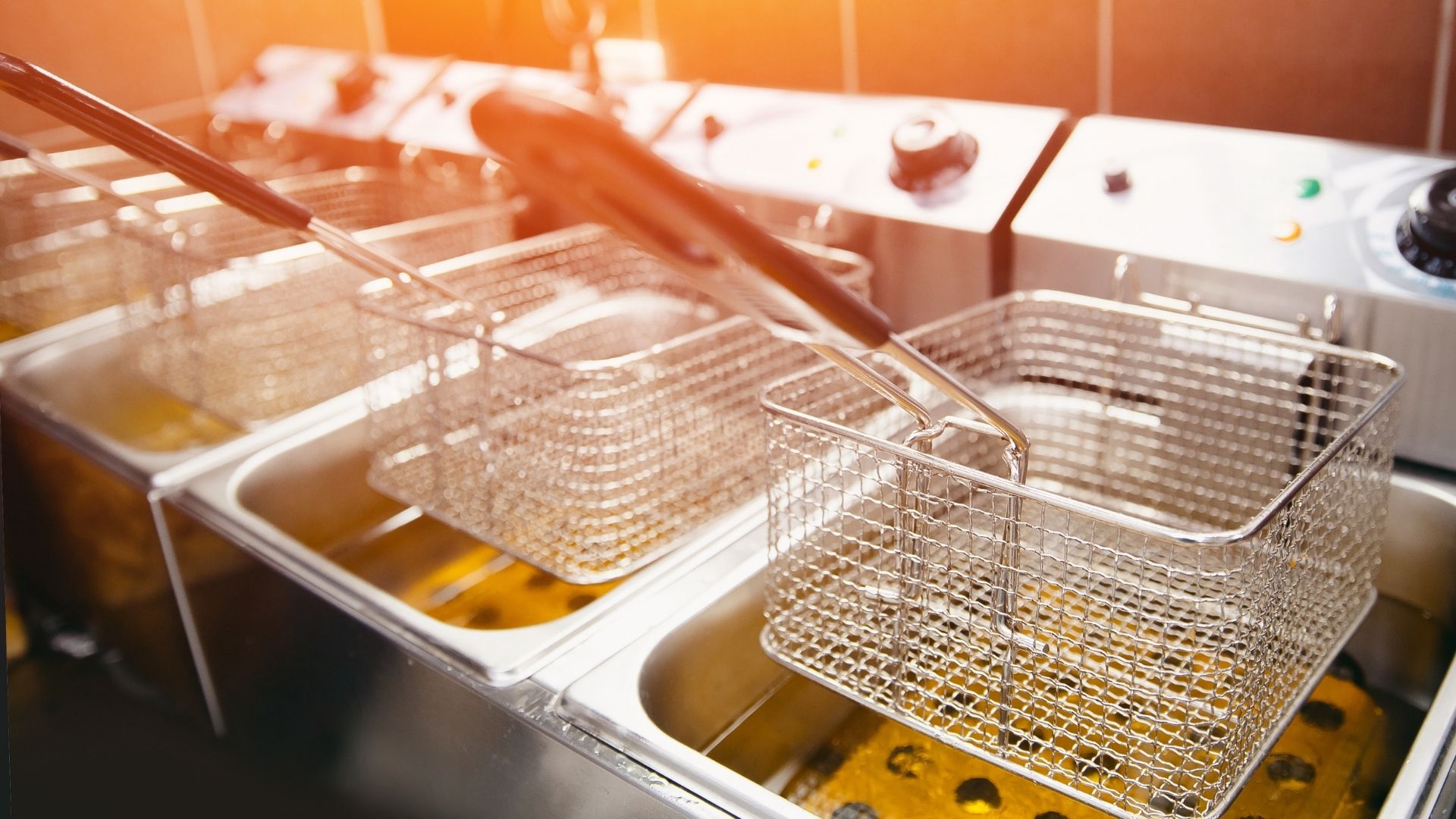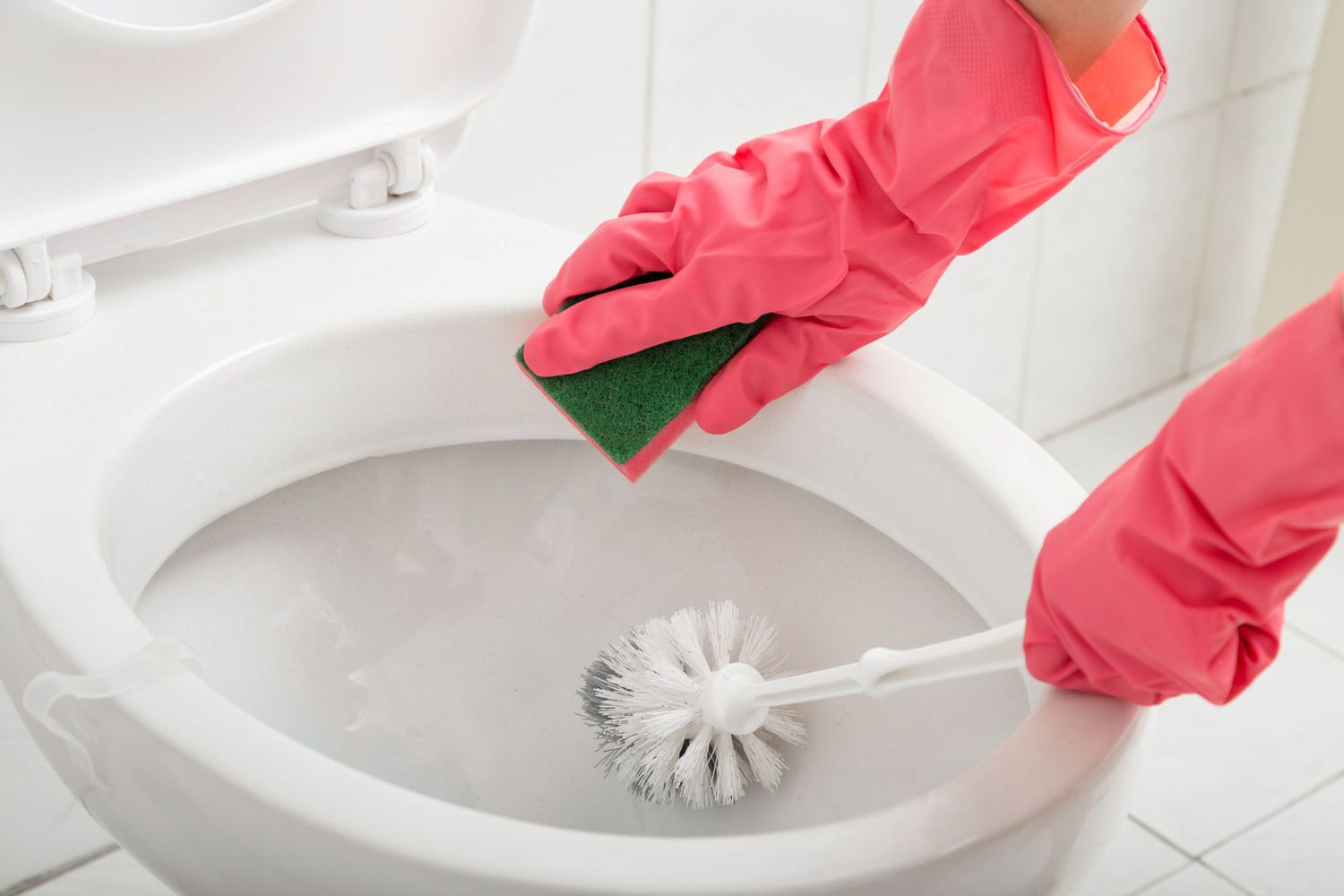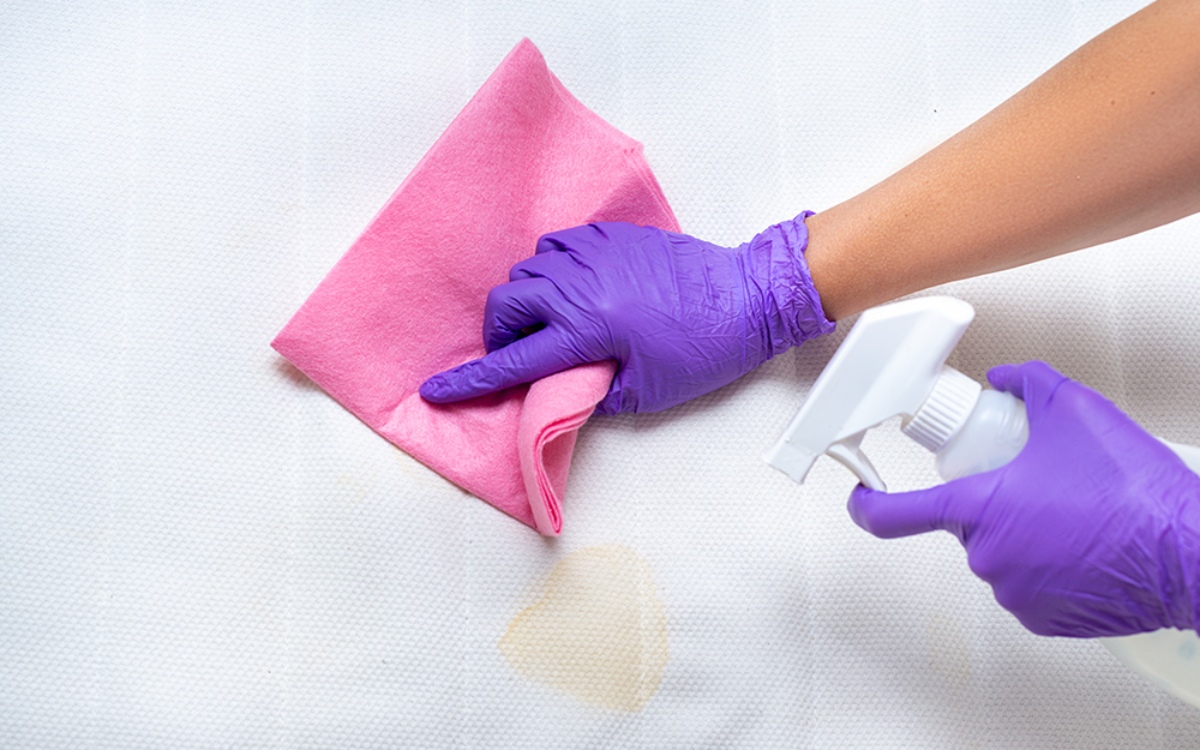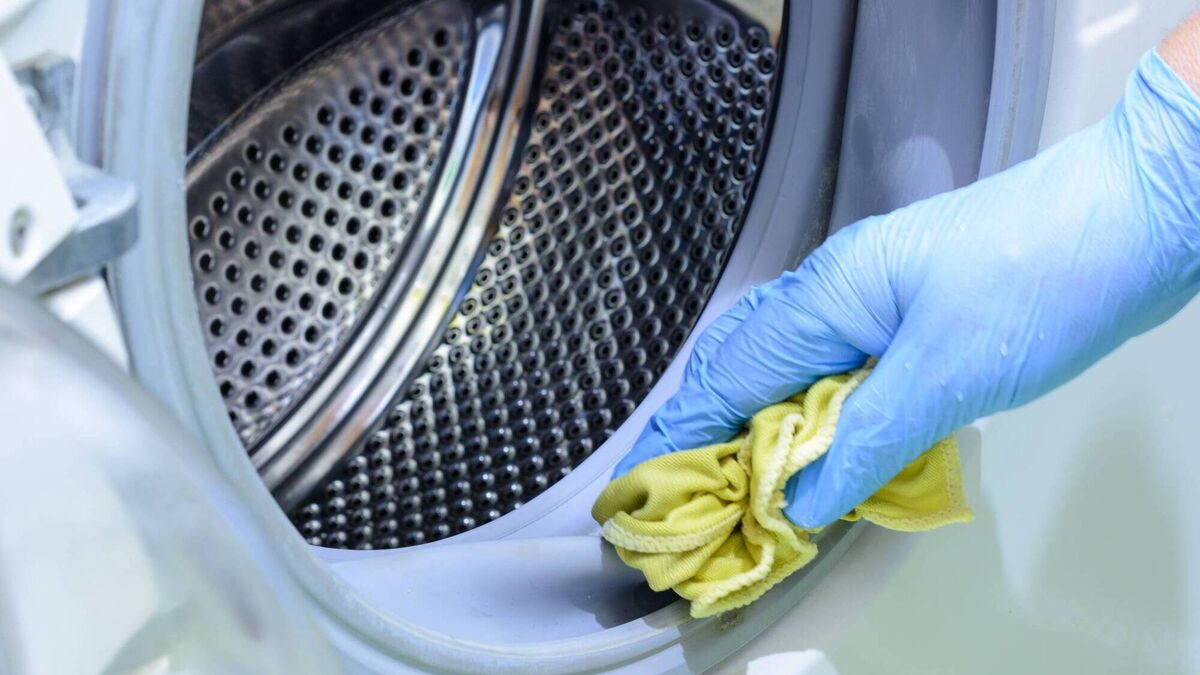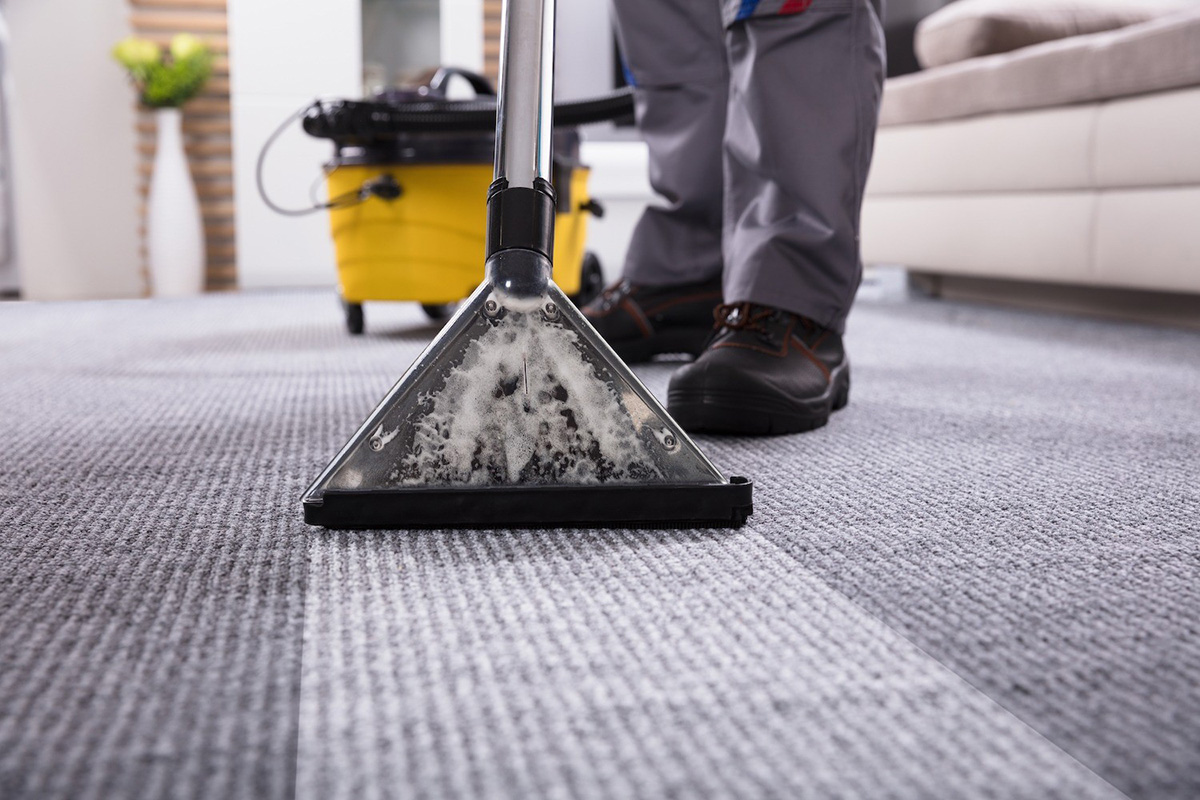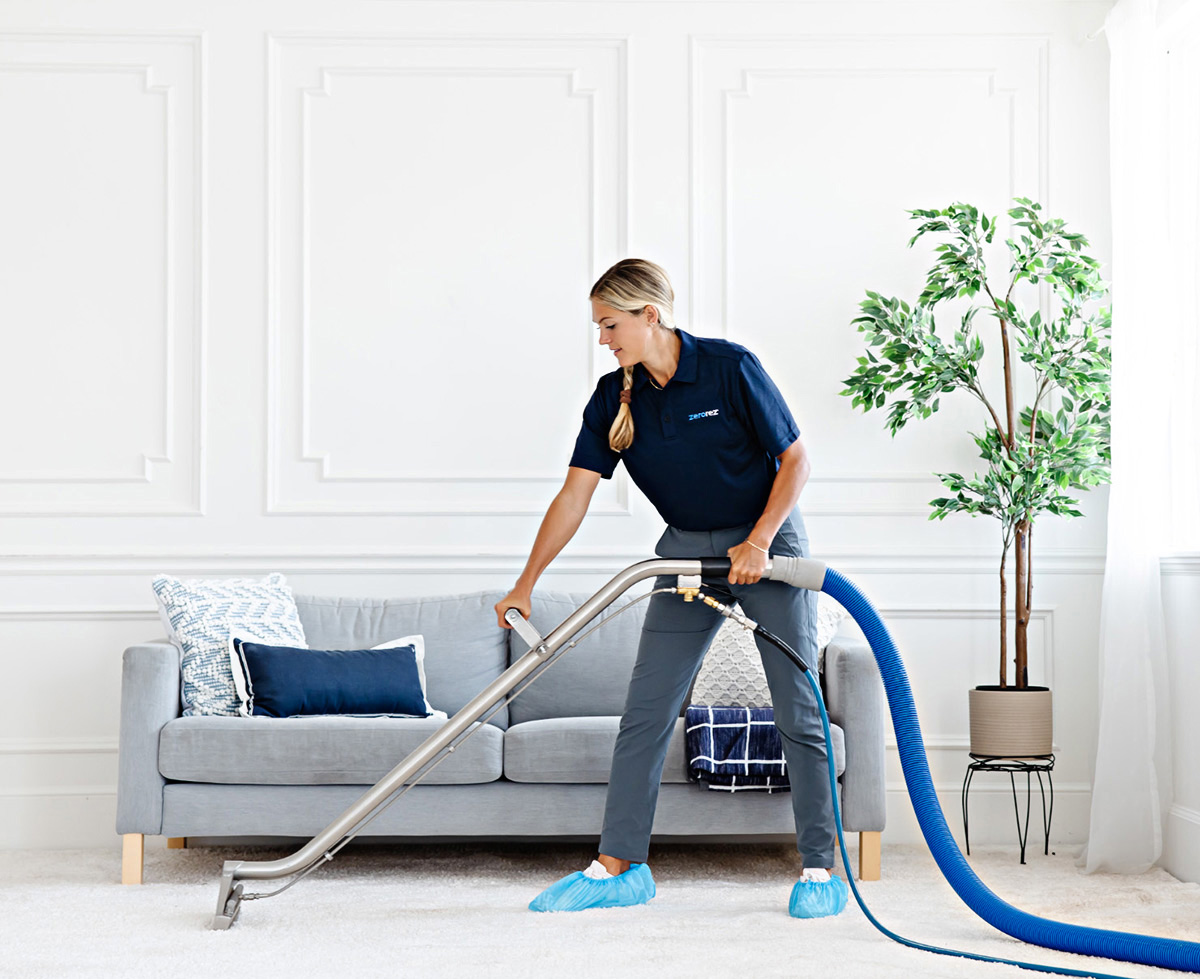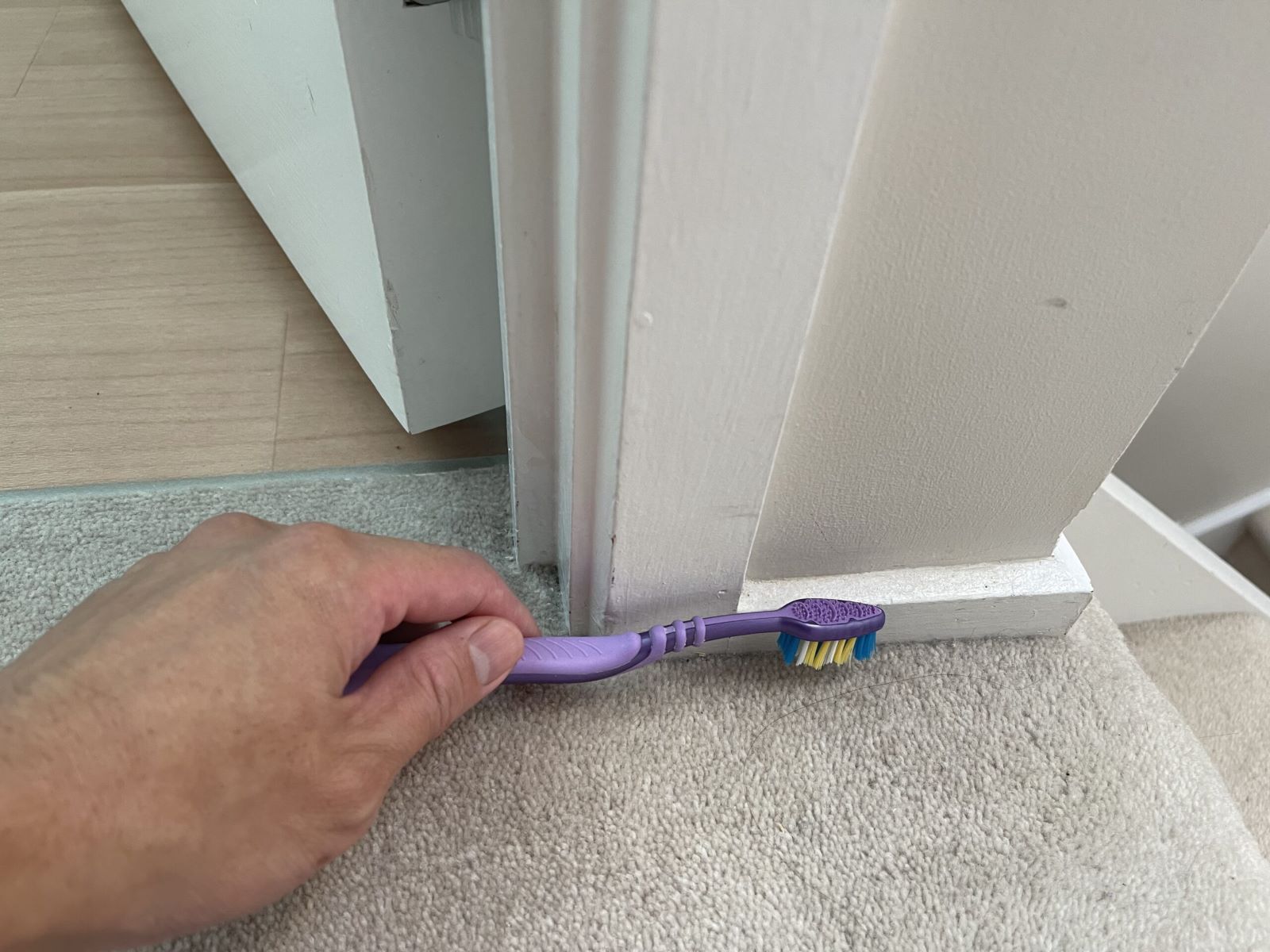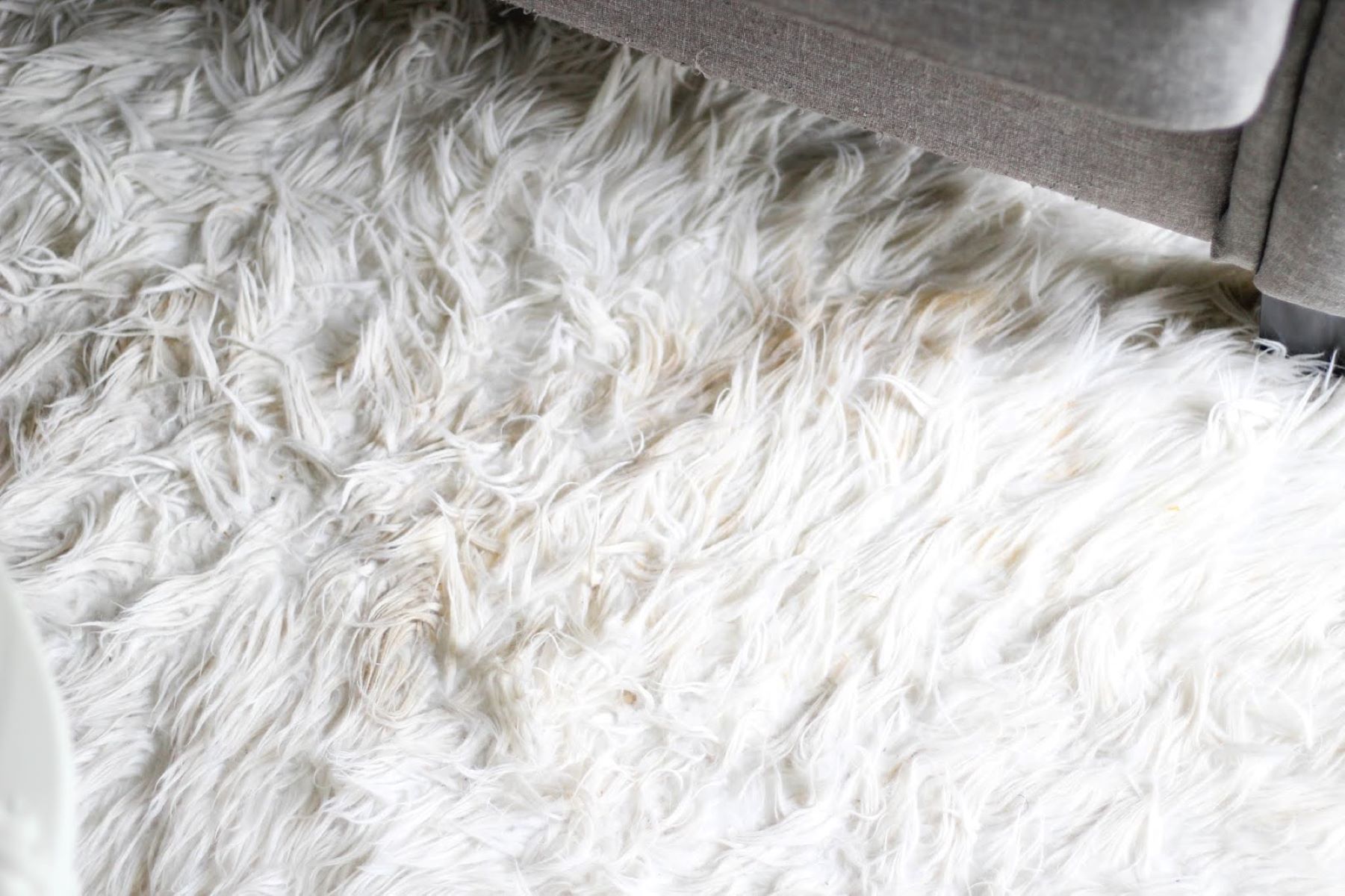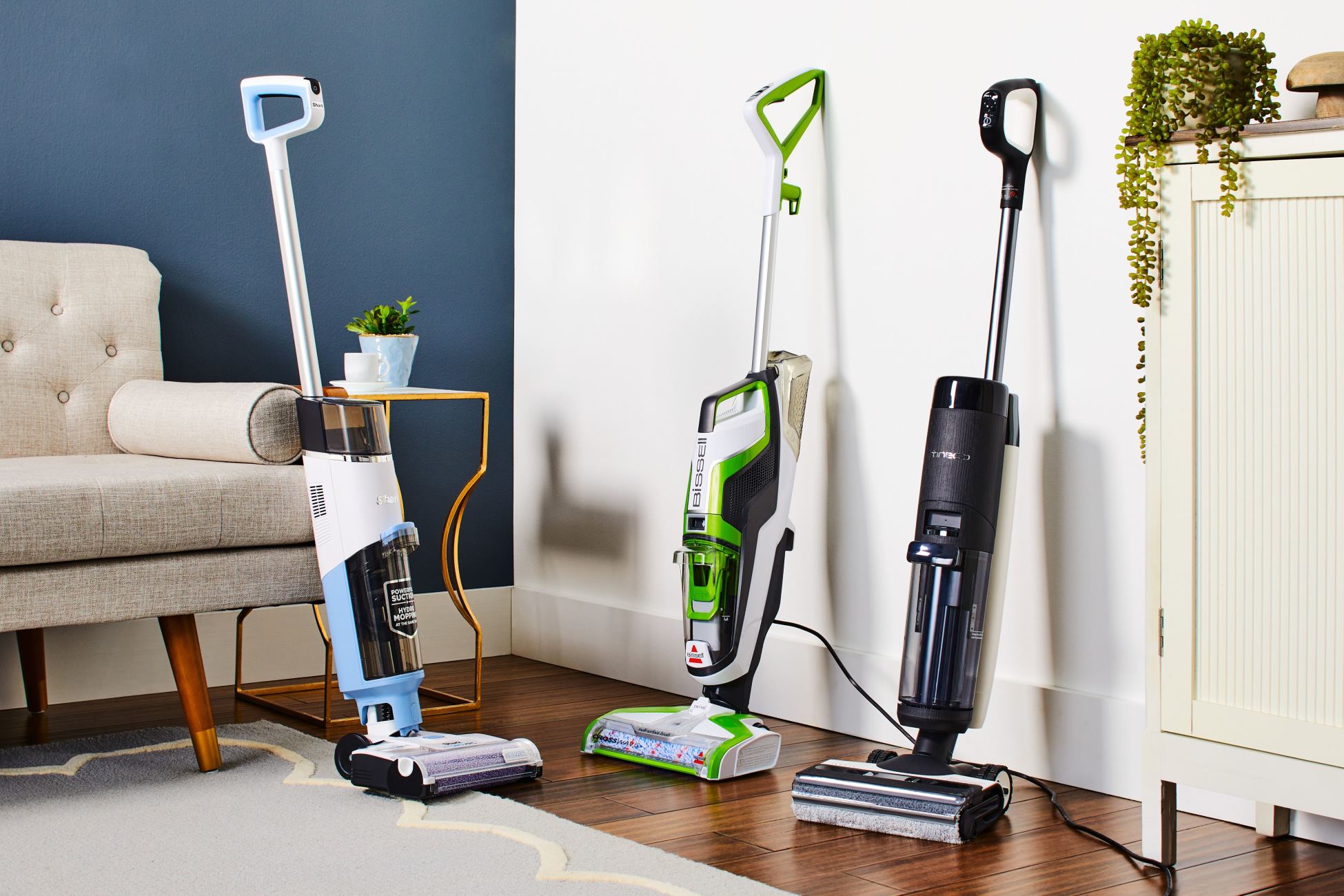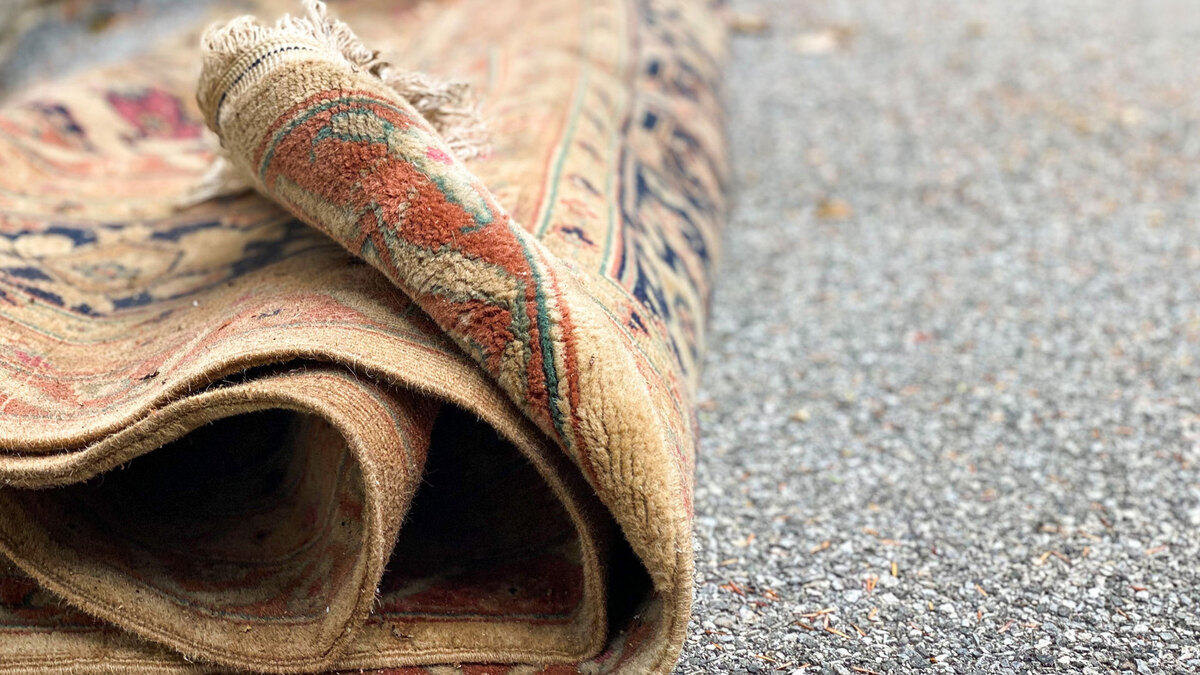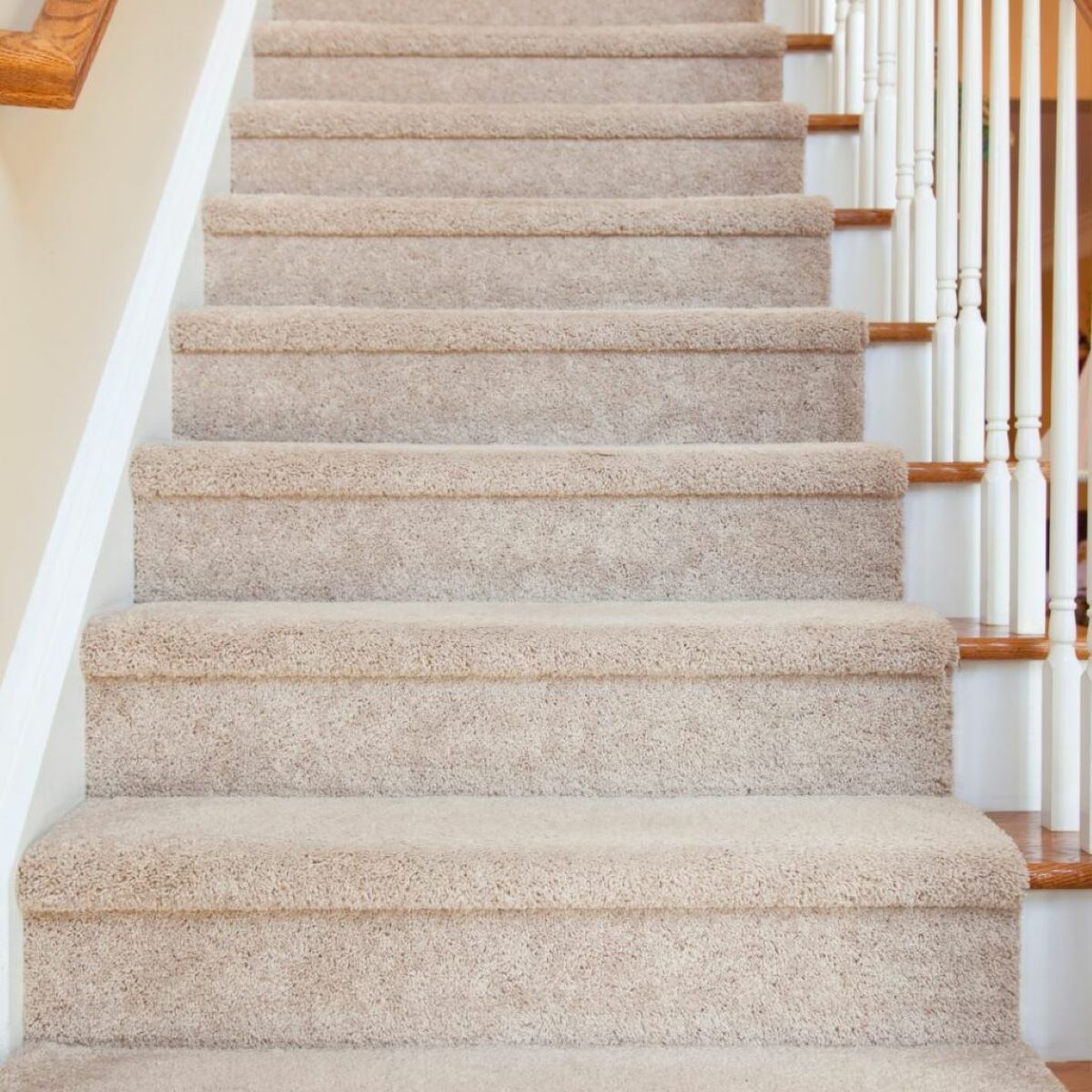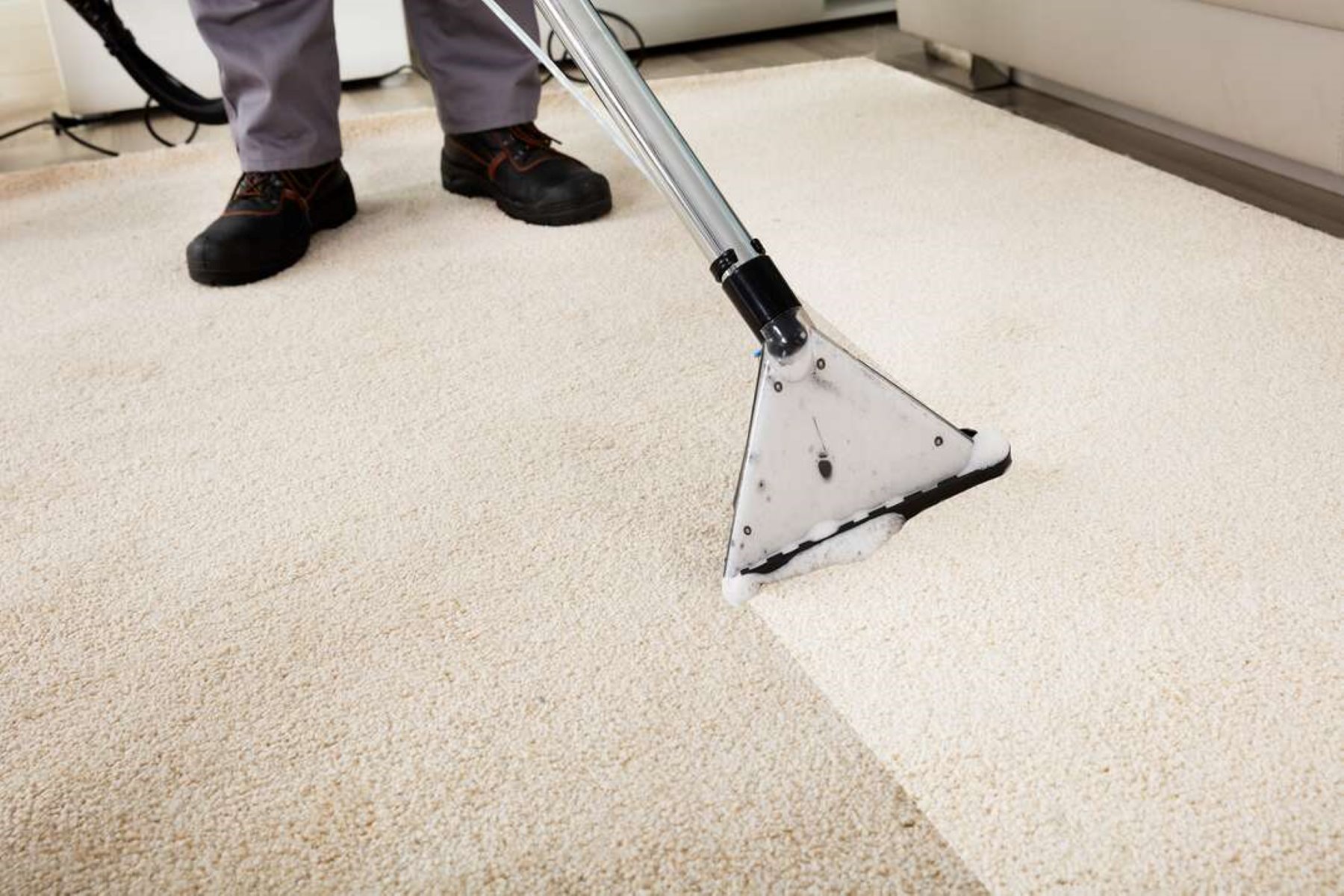

Articles
How To Deep Clean A Carpet
Modified: January 9, 2024
Learn the step-by-step process of deep cleaning a carpet with our informative articles. Say goodbye to dirt and stains and enjoy a fresh and revitalized home.
(Many of the links in this article redirect to a specific reviewed product. Your purchase of these products through affiliate links helps to generate commission for Storables.com, at no extra cost. Learn more)
Introduction
A clean and fresh-looking carpet can add a touch of elegance and sophistication to any space. However, over time, carpets can accumulate dirt, dust, stains, and odors, making them look dull and unappealing. Regular vacuuming can help to remove surface-level dirt, but a deep cleaning is necessary to tackle embedded debris and restore the carpet’s original beauty.
In this article, we will guide you through the process of deep cleaning a carpet, from gathering the necessary supplies to maintaining a clean carpet in the long term. Whether you’re dealing with high-traffic areas, stubborn stains, or just want to give your carpet a thorough refresh, these step-by-step instructions will help you achieve impressive results.
Before we dive into the details, it’s important to note that different carpets might require different cleaning methods. It’s always a good idea to check the manufacturer’s guidelines or consult with a professional to ensure that you’re using the appropriate technique for your specific type of carpet.
Now, let’s get started on our journey to revive your carpet and bring back its original charm.
Key Takeaways:
- Deep cleaning your carpet involves gathering supplies, spot treating stains, and choosing the right method. Proper drying and regular maintenance are crucial for a fresh, clean carpet that enhances your space.
- To maintain a clean carpet, vacuum weekly, address spills promptly, and use doormats. Professional deep cleaning, furniture rotation, and sun protection are key for long-lasting carpet cleanliness.
Read more: How To Deep Clean A Berber Carpet
Gathering the necessary supplies
Before embarking on your carpet deep cleaning journey, it’s essential to gather all the necessary supplies. Having everything ready will ensure a smooth and efficient process. Here are the essential items you’ll need:
- Carpet cleaning solution: Choose a high-quality carpet cleaning solution specifically formulated for deep cleaning. Look for one that is suitable for your carpet type and addresses any specific concerns such as stains or odors.
- Bucket or spray bottle: Depending on the cleaning method you choose, you’ll need a bucket for mixing the solution or a spray bottle for applying it onto the carpet.
- Carpet cleaning machine or steam cleaner: A carpet cleaning machine or steam cleaner can make the deep cleaning process much easier and more effective. If you don’t have one, you may consider renting one from a local home improvement store or hiring a professional carpet cleaning service.
- Scrub brush or carpet brush: A scrub brush or carpet brush with sturdy bristles can help to agitate the cleaning solution and dislodge ingrained dirt and debris.
- Clean towels or microfiber cloths: You’ll need clean towels or microfiber cloths for blotting and drying the carpet during and after the cleaning process.
- Protective gloves: It’s a good idea to wear protective gloves to shield your hands from any harsh chemicals in the cleaning solution or potential skin irritants.
- Vacuum cleaner: While not directly used during the deep cleaning process, a vacuum cleaner is essential for removing loose dirt and debris from the carpet before you begin.
Once you have gathered all these supplies, you’ll be fully equipped to tackle the deep cleaning process and restore your carpet’s pristine condition.
Preparing the carpet for deep cleaning
Before diving into the deep cleaning process, it’s important to properly prepare your carpet to ensure the best results. Here are the steps to follow:
- Remove any furniture: Clear the area of any furniture or obstacles on the carpet. This will provide you with a clear and unobstructed space to work with.
- Vacuum the carpet: Use a vacuum cleaner with a suitable attachment to thoroughly vacuum the entire carpet. Pay special attention to edges, corners, and high-traffic areas where dirt and debris tend to accumulate.
- Pre-treat any stains or spots: If you notice any stubborn stains or spots on the carpet, it’s best to pre-treat them before starting the deep cleaning process. There are a variety of stain removal products available on the market, or you can make a homemade solution using mild detergent and water. Follow the product instructions or apply the solution to the stain and gently blot with a clean cloth.
- Test for colorfastness: Before applying any cleaning solution to the entire carpet, it’s crucial to perform a colorfastness test. Select an inconspicuous spot on the carpet (such as a corner or under furniture) and apply a small amount of the cleaning solution. Gently blot the area with a clean white cloth and check for any color transfer. If there is no discoloration or damage, you can proceed with confidence.
- Protect delicate surfaces: If there are any delicate surfaces or objects near the carpet, such as wooden furniture or baseboards, it’s a good idea to protect them by placing aluminum foil or plastic wrap around their bases. This will prevent any potential water damage or contact with cleaning solution.
By properly preparing your carpet for deep cleaning, you’ll ensure that the process goes smoothly and that you achieve the best possible results. Once you’ve completed these steps, you’re ready to move on to spot treating any remaining stains or high-traffic areas on the carpet.
Spot treating stains and high-traffic areas
After preparing the carpet for deep cleaning, it’s time to tackle those stubborn stains and high-traffic areas. Here’s how you can effectively spot treat these areas:
- Identify the stains: Take a close look at your carpet and identify any visible stains or heavily soiled areas. Common types of stains include spills, pet accidents, or tracked-in dirt. By pinpointing these areas, you can focus your cleaning efforts where they are most needed.
- Choose the appropriate cleaning solution: Different stains may require different cleaning solutions. Consider the type of stain you’re dealing with, whether it’s greasy, acidic, or water-based, and choose a suitable carpet cleaning solution or stain remover accordingly. Read the instructions on the product carefully before applying.
- Apply the cleaning solution: Following the instructions on the cleaning solution, apply a small amount directly to the stain or high-traffic area. Avoid oversaturating the carpet, as this may lead to excessive moisture absorption and potential damage.
- Gently agitate the area: Use a scrub brush or a clean, soft cloth to gently work the cleaning solution into the stain or high-traffic area. Use light circular motions or back-and-forth strokes to loosen the dirt and lift the stain. Be careful not to scrub too vigorously, as this could damage the carpet fibers.
- Allow the solution to work: Depending on the product you’re using, leave the cleaning solution on the stain for a specific amount of time. This will allow it to penetrate deeply and break down the stain or dirt particles effectively.
- Blot the area: After the recommended time has passed, use a clean white cloth or paper towel to blot the treated area. Blotting helps to absorb the cleaning solution, along with the dissolved dirt and stain. Repeat the process until there’s no more visible residue on the cloth.
- Rinse the area: If the cleaning solution you’ve used requires rinsing, dampen a clean cloth with water and gently blot the area to remove any remaining residue. This step is crucial in preventing any leftover cleaning solution from attracting more dirt and causing a new stain.
By spot treating stains and high-traffic areas before the deep cleaning process, you’ll ensure that these troublesome spots are given extra attention and are more likely to be effectively removed. Once you’ve completed this step, you’re ready to move on to choosing a deep cleaning method that suits your carpet’s needs.
Choosing a deep cleaning method
Choosing the right deep cleaning method for your carpet is crucial in achieving optimal results. There are several methods to choose from, each suitable for different types of carpets and cleaning requirements. Here are a few popular options:
- Steam cleaning: Steam cleaning, also known as hot water extraction, is a widely used method for deep cleaning carpets. It involves using a machine that sprays hot water mixed with a cleaning solution onto the carpet and then immediately extracting it along with the dirt and debris. Steam cleaning is effective in removing deep-seated dirt, allergens, and odors. However, it may not be suitable for carpets made of natural fibers that are more sensitive to moisture.
- Dry cleaning: Dry cleaning is a method that uses chemical solvents to clean carpets without the need for excessive moisture. This method is gentle on delicate fibers and is a good option for carpets that cannot withstand water-based cleaning. Dry cleaning is efficient in removing surface-level dirt and stains, but it may not be as effective in tackling deeply embedded dirt.
- Shampooing: Shampooing involves applying a specialized carpet shampoo onto the carpet and agitating it to create a lather. The shampoo encapsulates the dirt, allowing it to be easily removed. This method requires using a carpet cleaning machine or manually scrubbing the carpet. Shampooing can be effective in removing dirt and stains, but it may leave behind residue that needs to be thoroughly rinsed.
- Bonnet cleaning: Bonnet cleaning is a low-moisture method that utilizes a rotary machine with a cotton or synthetic pad. The pad absorbs the dirt as it is agitated over the carpet. Bonnet cleaning is often used for routine maintenance and can help remove light dirt and stains. However, it may not be as effective in deep cleaning heavily soiled carpets.
When choosing a deep cleaning method, consider factors such as the type and condition of your carpet, the level of dirt and stains, and any specific cleaning requirements or restrictions. It’s also beneficial to consult the manufacturer’s guidelines or seek professional advice to ensure you choose the most suitable method for your carpet.
Once you’ve decided on the deep cleaning method, it’s time to proceed with the cleaning process using the appropriate equipment and techniques.
Using a carpet cleaning machine
If you’ve chosen to use a carpet cleaning machine for deep cleaning, follow these steps to effectively utilize the equipment:
- Read the machine’s instructions: Before operating the carpet cleaning machine, thoroughly read the manufacturer’s instructions. Familiarize yourself with the different settings and features of the machine to ensure safe and proper usage.
- Prepare the machine: Fill the machine’s tank with the recommended amount of water and the appropriate cleaning solution. Make sure to follow the manufacturer’s instructions for the correct dilution ratio. Attach the appropriate cleaning attachment or wand to the machine.
- Test in an inconspicuous area: Before starting, it’s always advisable to test the machine in a small, inconspicuous area of the carpet. This will allow you to gauge the cleaning effectiveness and check for any adverse reactions or color bleeding.
- Begin cleaning: Starting from the farthest corner of the room, slowly push the machine forward, allowing it to dispense the cleaning solution onto the carpet. Release the trigger and pull the machine back towards you to extract the dirty water. Repeat this process, overlapping each pass slightly for thorough cleaning.
- Pay extra attention to stubborn spots: For heavily soiled or stained areas, focus on making multiple passes over them and increase the concentration of the cleaning solution if necessary. Use the machine’s brush attachments or manually agitate the area with a scrub brush for better results.
- Empty and refill the tank: As the dirty water container fills up, stop and empty it periodically to prevent it from overflowing. Refill the clean water and cleaning solution tank as needed.
- Dry the carpet: After completing the cleaning process, allow the carpet to dry thoroughly. Open windows or use fans to promote airflow and expedite the drying process. Avoid walking on the carpet until it is completely dry to prevent new dirt from being tracked onto the freshly cleaned surface.
Using a carpet cleaning machine can provide deep and effective cleaning results, especially for heavily soiled carpets. However, always follow the manufacturer’s instructions and take proper precautions to avoid damage to the machine or the carpet.
If you don’t have access to a carpet cleaning machine, don’t worry. There are alternative deep cleaning methods available that can still help to revive your carpet’s cleanliness and appearance.
To deep clean a carpet, start by vacuuming thoroughly to remove loose dirt and debris. Then, use a carpet cleaning solution and a carpet cleaning machine to deep clean and remove any stubborn stains. Finally, allow the carpet to dry completely before walking on it.
Steam cleaning the carpet
Steam cleaning, also known as hot water extraction, is a popular and highly effective method for deep cleaning carpets. Here’s how you can steam clean your carpet:
- Prepare the machine: Fill the steam cleaner’s tank with hot water according to the manufacturer’s instructions. Add the appropriate amount of carpet cleaning solution to the tank, following the recommended dilution ratio.
- Pre-treat any stains: Before steam cleaning, spot treat any visible stains or heavily soiled areas using a suitable stain remover or pre-treatment product. This will help to loosen the stains and increase the effectiveness of the steam cleaning process.
- Start from a corner: Begin steam cleaning from a corner of the room, working your way towards the exit. This will prevent you from stepping on the freshly cleaned areas while allowing you to gradually move out of the room without re-soiling the carpet.
- Operate the machine: Hold the steam cleaning wand or attachment slightly above the carpet and press the trigger to release the hot water and cleaning solution onto the carpet. Move the wand slowly and in overlapping passes to ensure thorough cleaning coverage.
- Extract the water: As you move the wand back and forth, the machine will simultaneously extract the water along with the dirt and cleaning solution. Make slow and deliberate passes to allow the machine to extract as much moisture as possible.
- Pay extra attention to high-traffic areas: Focus on heavily trafficked areas or spots with stubborn stains by making additional passes over those areas. Give the cleaning solution a few extra seconds of dwell time to allow it to penetrate and break down the dirt.
- Allow the carpet to dry: After steam cleaning, allow the carpet to dry completely before walking on it or replacing furniture. Open windows or use fans to facilitate airflow and expedite the drying process.
- Vacuum the carpet: Once the carpet is dry, vacuum it thoroughly to remove any remaining loose dirt and restore the carpet’s fluffiness. This will help to bring back the plush appearance and ensure a clean finish.
Steam cleaning is a highly effective method for deep cleaning carpets, as it not only removes dirt and stains but also helps to eliminate allergens and bacteria. However, it’s essential to follow the manufacturer’s instructions and exercise caution to avoid over-wetting the carpet, as excessive moisture can lead to mold growth or damage the carpet fibers.
Dry cleaning the carpet
Dry cleaning is an alternative method for deep cleaning carpets, suitable for delicate or moisture-sensitive fibers. Here’s how you can dry clean your carpet:
- Choose a dry cleaning solution: Look for a quality dry carpet cleaning product that is specifically designed for use with dry cleaning machines. Read the product instructions carefully to determine the right amount to use and any additional steps required for effective cleaning.
- Prepare the carpet: Before applying the dry cleaning solution, vacuum the carpet thoroughly to remove any loose dirt or debris. Pay special attention to high-traffic areas and remove any visible stains or spots using a suitable pre-treatment product.
- Apply the dry cleaning solution: Following the product instructions, apply the dry cleaning solution onto the carpet using a dry cleaning machine. The machine will distribute the solution evenly across the carpet fibers.
- Work the solution into the carpet: Use the machine’s brushes or agitators to gently work the dry cleaning solution into the carpet. This helps to loosen the dirt and lift it to the surface for easier extraction.
- Let the solution sit: Allow the dry cleaning solution to sit on the carpet for the recommended amount of time, typically around 15-20 minutes. This gives the solution ample time to break down dirt and stains.
- Remove the dirt: Run the dry cleaning machine over the carpet, slowly and in overlapping passes, to extract the dirt and cleaning solution. The machine absorbs the dirt into its collection compartment or a disposable pad.
- Let the carpet dry: Once the dry cleaning process is complete, allow the carpet to air dry completely. The drying time may vary depending on factors such as humidity and airflow. Avoid walking on the carpet until it is fully dry to prevent re-soiling.
- Perform a final vacuuming: After the carpet is dry, vacuum it thoroughly to remove any residue or remaining dirt. This step helps to fluff up the carpet fibers and restore its appearance.
Dry cleaning provides a gentle and effective way to clean carpets without the use of excessive moisture. It is a great option for carpets made of delicate materials or those located in areas where quick drying is essential.
Remember to always read and follow the instructions provided by the dry cleaning solution manufacturer to ensure the best results and protect the integrity of your carpet.
Letting the carpet dry completely
Properly drying the carpet after deep cleaning is crucial to prevent mold growth, bacterial growth, and the accumulation of dirt or debris. Here are some steps to ensure your carpet dries completely:
- Air circulation: Open windows and doors to allow fresh air to circulate in the room. This will help to promote airflow and expedite the drying process. If weather permits, you can also use fans or air movers to increase air circulation.
- Utilize ceiling fans: Turn on any ceiling fans in the room to help move air around. This can aid in drying the carpet faster by enhancing evaporation.
- Remove excess moisture: If there is excess moisture in the carpet, use towels or clean cloths to blot the wet areas. Apply gentle pressure to absorb as much moisture as possible.
- Avoid walking on the carpet: While the carpet is still wet, refrain from walking on it to prevent new dirt or stains from transferring onto the damp fibers. Place signs or barriers to remind others to avoid stepping on the carpet as well.
- Keep pets and children off the carpet: Pets and children may unintentionally introduce dirt or moisture to the carpet, hindering the drying process. Keep them away from the area until the carpet is completely dry.
- Monitor drying time: The drying time for carpets can vary depending on factors such as humidity, airflow, carpet thickness, and the deep cleaning method used. It can take anywhere from a few hours to several days. Allow ample time for the carpet to dry, being patient to avoid potential moisture-related issues.
- Check carpet moisture levels: You can use a moisture meter or a simple touch test to check if the carpet is fully dry. Touch the carpet with a clean, dry hand. If it feels cool or damp, it is likely still wet and needs more time to dry.
- Perform a final vacuuming: Once the carpet is completely dry, vacuum it thoroughly. This will help to remove any remaining particles or debris on the surface and fluff up the carpet fibers.
By allowing your carpet to dry completely, you ensure that it is fresh, clean, and ready to be enjoyed again. Taking the necessary drying precautions will help maintain the cleanliness and longevity of your carpet.
Read more: How To Deep Clean A Sink
Vacuuming and fluffing the carpet fibers
Vacuuming your carpet after deep cleaning is an important step to remove residual dirt and debris, as well as to restore the fluffy and plush appearance of the carpet fibers. Here’s how you can effectively vacuum and fluff your carpet:
- Check your vacuum cleaner: Ensure that your vacuum cleaner is in good working condition. Check the bag or canister and empty or replace it if necessary. Make sure the vacuum brush or beater bar is clean and free from any tangled hair or fibers.
- Adjust the vacuum height: Most vacuum cleaners have an adjustable height setting. Set the vacuum to the appropriate height for your carpet type. For low-pile carpets, set it to the lowest setting, and for high-pile or plush carpets, raise the height to avoid excessive friction.
- Vacuum in multiple directions: Vacuum the carpet in multiple directions to ensure thorough cleaning. Start by vacuuming in a back-and-forth or side-to-side motion, overlapping each pass slightly. Then, vacuum in a diagonal direction to capture dirt and debris from different angles.
- Pay attention to edges and corners: Use the crevice or edge attachment of your vacuum cleaner to clean along the baseboards and in the corners of the room. These areas tend to collect dust and dirt, so extra attention is needed to remove them effectively.
- Slow and deliberate movements: To maximize the effectiveness of vacuuming, make slow and deliberate movements. This allows the vacuum to pick up more dirt and gives the brushes or beater bar sufficient time to agitate the carpet fibers.
- Fluff the carpet fibers: After vacuuming, restore the carpet’s plush appearance by gently using a carpet rake or a soft-bristle brush to fluff up the fibers. This helps the carpet regain its texture and makes it more visually appealing.
- Address any remaining spots or stains: If you notice any remaining spots or stains after vacuuming, spot treat them with a suitable carpet stain remover following the product instructions. Blot the area gently with a clean cloth or paper towel to lift the stain.
- Maintain regular vacuuming: To keep your carpet clean and in good condition, establish a regular vacuuming routine. Aim to vacuum at least once a week, or more frequently in high-traffic areas or homes with pets.
Vacuuming and fluffing the carpet fibers not only enhances the carpet’s appearance but also helps to remove dirt, dust, and allergens, contributing to a healthier indoor environment. By incorporating these practices into your carpet maintenance routine, you can keep your carpet looking fresh and clean for years to come.
Maintaining a clean carpet
Maintaining a clean carpet is essential to extend its lifespan, preserve its appearance, and promote a healthy indoor environment. Here are some tips to help you keep your carpet looking fresh and clean:
- Regular vacuuming: Vacuum your carpet at least once a week, or more frequently in high-traffic areas. Regular vacuuming helps to remove loose dirt, debris, and allergens from the surface of the carpet, preventing them from settling deep into the fibers.
- Address spills and stains immediately: Tackle spills and stains promptly to prevent them from setting into the carpet. Blot the stain with a clean cloth or paper towel, working from the outside of the stain towards the center. Avoid rubbing the stain, as this can spread it and damage the carpet fibers.
- Use doormats and rugs: Place doormats at entryways to trap dirt and debris before they reach the carpet. Additionally, use area rugs or runners in high-traffic areas to protect the carpet from excessive wear and tear.
- Remove shoes indoors: Encourage family members and guests to remove their shoes before walking on the carpet. This prevents dirt, oils, and other contaminants from being tracked onto the carpet, reducing the need for frequent deep cleaning.
- Rotate furniture: Regularly rearrange your furniture to distribute the weight and prevent indents or permanent marks on the carpet. This also helps to expose different areas of the carpet to evenly distribute wear and tear.
- Professional deep cleaning: Schedule professional deep cleaning services at least once or twice a year, depending on the level of foot traffic and other factors. Professional cleaners have the expertise and equipment necessary to thoroughly clean and revitalize your carpet.
- Protect against sun damage: Over time, exposure to direct sunlight can cause fading and discoloration of your carpet. Use curtains, blinds, or UV-protective window film to minimize sun damage to your carpet.
- Preventative treatments: Consider applying carpet protectants or stain-resistant treatments after deep cleaning. These treatments create a barrier on the carpet fibers, making it easier to clean up spills and preventing stains from setting in.
- Spot clean as needed: If you notice any new stains or spots, address them promptly using appropriate stain removal techniques or products. The sooner you address a stain, the easier it will be to remove.
- Regular maintenance checks: Regularly inspect your carpet for signs of wear, damage, or areas that may require extra attention. Repair any loose threads, snags, or small damages to prevent further deterioration.
By following these maintenance tips, you can help to preserve the cleanliness and longevity of your carpet. With proper care, your carpet will continue to bring comfort and enhance the aesthetics of your space for years to come.
Conclusion
Deep cleaning your carpet is an essential task that helps maintain its cleanliness, appearance, and longevity. By following the steps outlined in this article, you can effectively deep clean your carpet and breathe new life into it.
Start by gathering the necessary supplies, preparing the carpet for deep cleaning, and spot treating any stains or high-traffic areas. Choose the appropriate deep cleaning method based on your carpet type and cleaning requirements. Whether you opt for steam cleaning or dry cleaning, ensure you follow the manufacturer’s instructions and prioritize safety.
After deep cleaning, allow the carpet to dry thoroughly to prevent mold or bacterial growth. Once dry, vacuum the carpet to remove residual dirt and debris, and fluff the fibers to restore the carpet’s plushness and appearance.
Maintaining a clean carpet is just as important as deep cleaning. Implementing regular vacuuming, addressing spills and stains promptly, and using doormats and rugs can help prevent dirt and damage. Seek professional deep cleaning services periodically, rotate furniture, and protect your carpet from sun damage.
By incorporating these practices into your carpet cleaning routine, you can enjoy a fresh and clean carpet that enhances the aesthetics of your space while creating a healthy indoor environment.
Remember, each carpet is unique, so it’s important to always refer to manufacturer guidelines or consult with professionals for specific care instructions. With proper maintenance and care, your carpet will continue to be a source of comfort and beauty in your home or office for years to come.
Frequently Asked Questions about How To Deep Clean A Carpet
Was this page helpful?
At Storables.com, we guarantee accurate and reliable information. Our content, validated by Expert Board Contributors, is crafted following stringent Editorial Policies. We're committed to providing you with well-researched, expert-backed insights for all your informational needs.
